Key takeaways:
- Docker improves collaboration by creating consistent environments for development, reducing issues like “it works on my machine.”
- Efficiency and scalability are key benefits, allowing teams to quickly deploy updates and handle traffic spikes with ease.
- The learning curve and performance optimization can be challenges when adopting Docker, requiring careful management and understanding.
- Best practices include keeping images lean, using Docker Compose for multi-container applications, and regularly updating images to avoid compatibility issues.
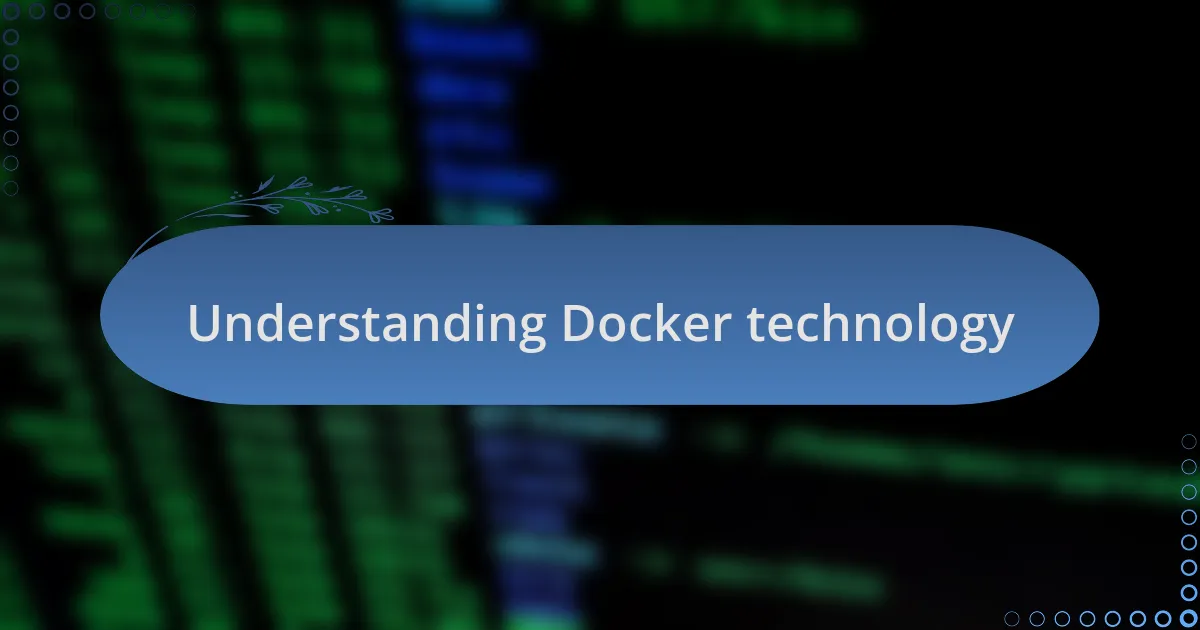
Understanding Docker technology
Docker is a platform that enables developers to create, deploy, and manage applications in isolated environments called containers. I remember the first time I tried Docker; it was like finding the perfect organizational tool for my projects. Suddenly, I could run multiple applications on the same machine without the hassle of conflicting dependencies. Isn’t that a game-changer?
When I think about Docker, I often consider its impact on collaboration within teams. Imagine having a standardized environment that ensures everyone is literally on the same page—or container, rather! This uniformity not only reduces the “it works on my machine” dilemma but also fosters a sense of camaraderie among team members as they work with the same setup. Have you ever experienced the frustration of dealing with environment discrepancies?
Moreover, the efficiency of Docker is truly remarkable. It allows for rapid development cycles by enabling quick iterations and deployments. I’ve seen teams significantly reduce downtime during updates, which can feel like a breath of fresh air when you’re racing against deadlines. Isn’t it incredible how a tool can reshape the way we think about and approach our development processes?
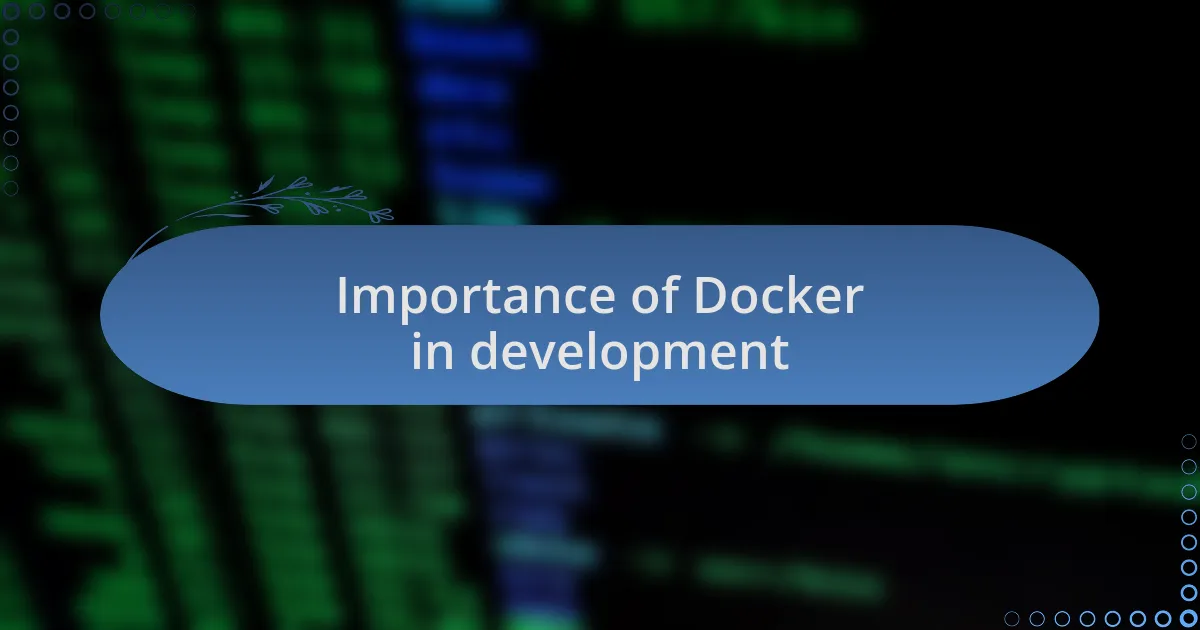
Importance of Docker in development
Docker is crucial in development because it ensures consistency across different environments. I recall a project I worked on where we transitioned from a mix of setups to Docker. The relief we felt when each team member could spin up the same environment effortlessly was palpable. It made me appreciate how a simple container can eliminate those pesky issues caused by conflicting software versions.
Another point worth highlighting is Docker’s scalability. I’ve experienced moments where our application had to handle sudden traffic spikes; Docker allowed us to replicate containers on the fly. Isn’t it fascinating how this flexibility can save the day? Knowing that you can scale up or down as needed gives you a sense of control that is invaluable.
Finally, there’s the speed of deployment that Docker brings to the table. I was once part of a team that took weeks to release updates due to various obstacles, but with Docker, we slashed that time significantly. The excitement in our team when we managed to push out updates in mere minutes was electric. Having that nimbleness is not just a convenience; it can be a competitive edge in today’s fast-paced development landscape. How often do you find yourself wishing for just a little more speed?
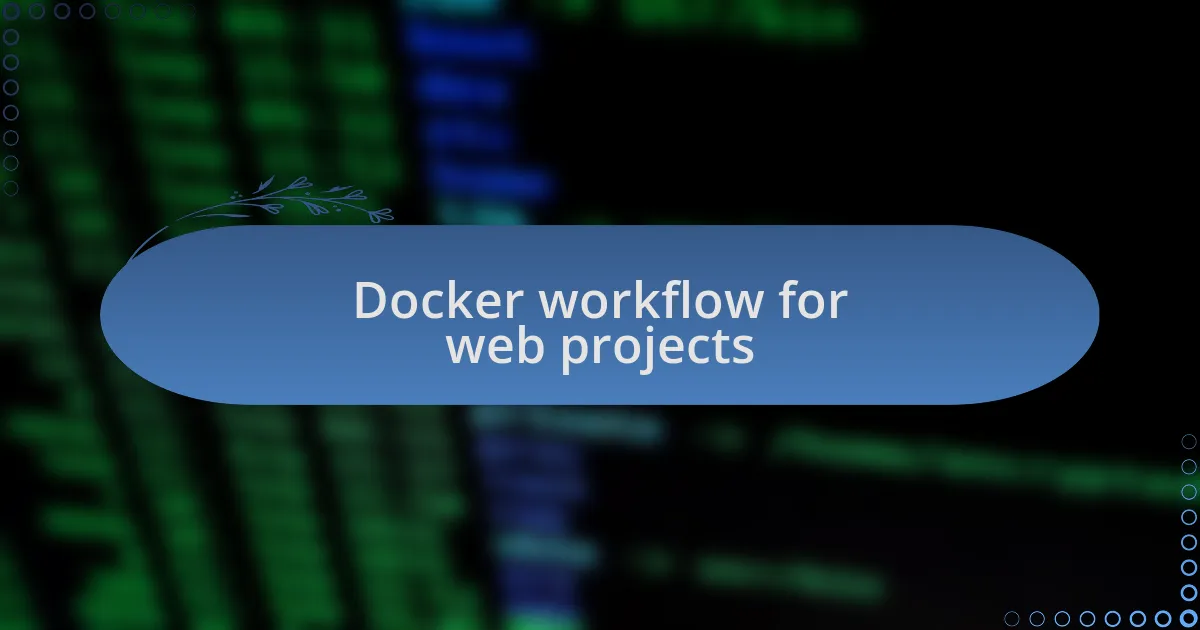
Docker workflow for web projects
Using Docker for web projects transforms the way teams approach development workflows. In my experience with a recent project, integrating Docker allowed us to define our entire environment in a Dockerfile. This not only streamlined initial setups but also meant that new team members could get up and running quickly without the usual headaches of configuration. Aren’t you tired of spending hours on setting up environments that should be straightforward?
When I first started incorporating Docker Compose into our workflow, I was amazed at how effortlessly we could manage multi-container applications. I remember the joy of hitting that single command to spin up an entire stack — web server, database, and caching layer all ready for development. It felt like magic, but it was just good workflow management. Who wouldn’t want to simplify what often feels like a complex puzzle?
Moreover, the development lifecycle benefits are significant. Having the ability to test changes in an isolated container setup not only prevents disruptions in our primary environment but also boosts our confidence during deployment. Reflecting on a time when we faced a critical bug, running tests in Docker saved us from a potentially costly downtime. Does everyone fully appreciate the peace of mind that a consistent, isolated environment can offer?
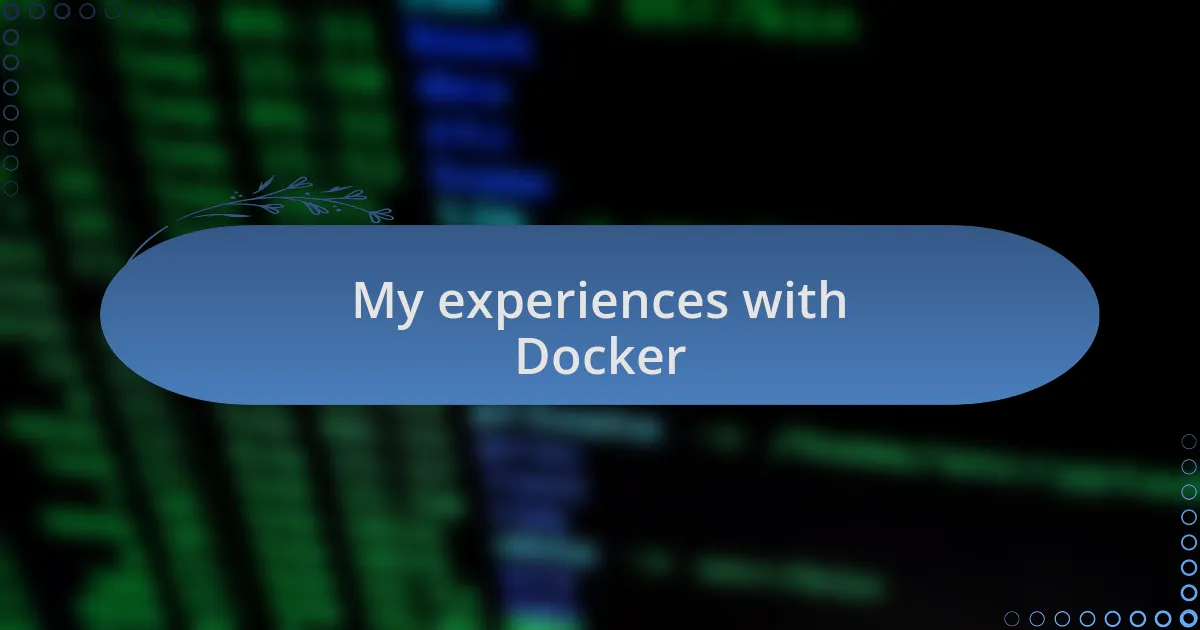
My experiences with Docker
My experiences with Docker have been incredibly rewarding, especially when it comes to fostering collaboration within my team. One project comes to mind where I used Docker to create a shared environment with minimal struggles. I still recall the relief on everyone’s faces when they could all work seamlessly on the same codebase without constantly troubleshooting local setups. Isn’t it liberating to eliminate those repetitive issues?
Early on, I had my reservations about adopting a new technology like Docker. I vividly remember the first time I successfully deployed an application using it; it felt like I had cracked a secret code. The confidence that surged through me showed me that the learning curve was worth it. Have you ever had that moment when everything just falls into place?
As I continued my journey with Docker, its benefits became even clearer. I started to appreciate the faster feedback loops during our development cycles. There was an instance when a last-minute change threatened our deadline, but because we had that Dockerized setup, we quickly addressed the issue and pushed the update without breaking a sweat. Can you imagine how stressful it would have been without that reliability?
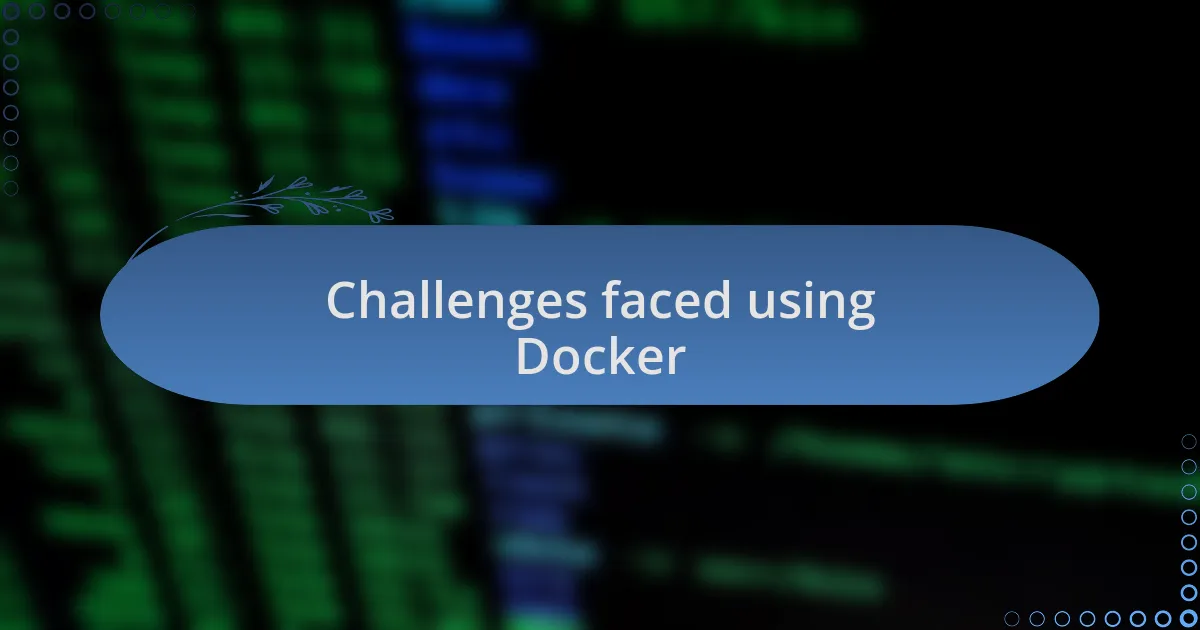
Challenges faced using Docker
Challenges faced while using Docker can sometimes feel daunting. One significant hurdle I encountered was the steep learning curve, especially for team members who were new to containerization. I remember a colleague struggling to understand Docker’s networking concepts; it took several sessions of patience and troubleshooting before they finally grasped how containers interact. Hasn’t anyone else faced that moment of confusion when trying to wrap your head around complex tech?
Another issue I’ve run into is related to performance. After moving an application to Docker, I noticed it was sluggish compared to running it directly on the host machine. I was surprised and frustrated; how could something so efficient feel slow? It turned out, managing resources and optimizing Docker containers requires some effort and fine-tuning. Have you ever been caught off guard by technology not performing as you expected?
Lastly, compatibility can throw a wrench in the works. I once spent hours trying to get a legacy application to run smoothly in a Docker container, only to realize that the compatibility issues were tied to the specific image used. It made me reflect on how assumptions can sometimes lead to unexpected roadblocks. Why is it that the most promising tools often bring their own sets of challenges?
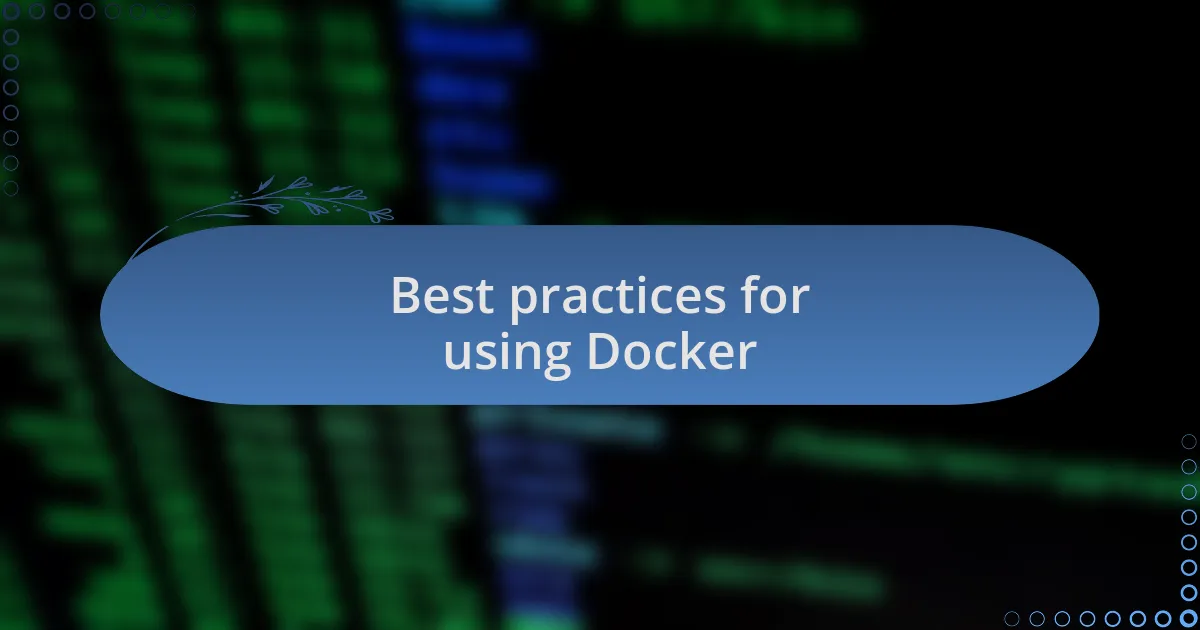
Best practices for using Docker
When using Docker, one of the best practices I’ve adopted is to keep my images lean. I’ve learned the hard way that bloated images can lead to longer deployment times and unnecessary resource consumption. After trimming down one project’s image, I was amazed at how much faster everything loaded, making me wonder if I’d been missing this trick all along with other projects. Have you ever felt like a simple adjustment could unlock better performance?
Another crucial practice is utilizing Docker Compose for multi-container applications. I remember working on a project with several interconnected services. Managing them with individual Docker commands was cumbersome and error-prone. With Docker Compose, I was able to define all my services in a single configuration file, streamlining the entire setup process. It felt empowering to see how organization could save me from potential headaches. Have you experienced the relief that comes from simplifying complex setups?
Lastly, regularly updating your images and containers is something I can’t emphasize enough. At one point, I neglected updates for a few months, thinking everything was stable. When it came time to push some new features, I faced numerous compatibility issues that could have been avoided. Now, I prioritize keeping everything current, and it’s become a game-changer for my workflow. Isn’t it interesting how a little maintenance can lead to smoother sailing down the road?